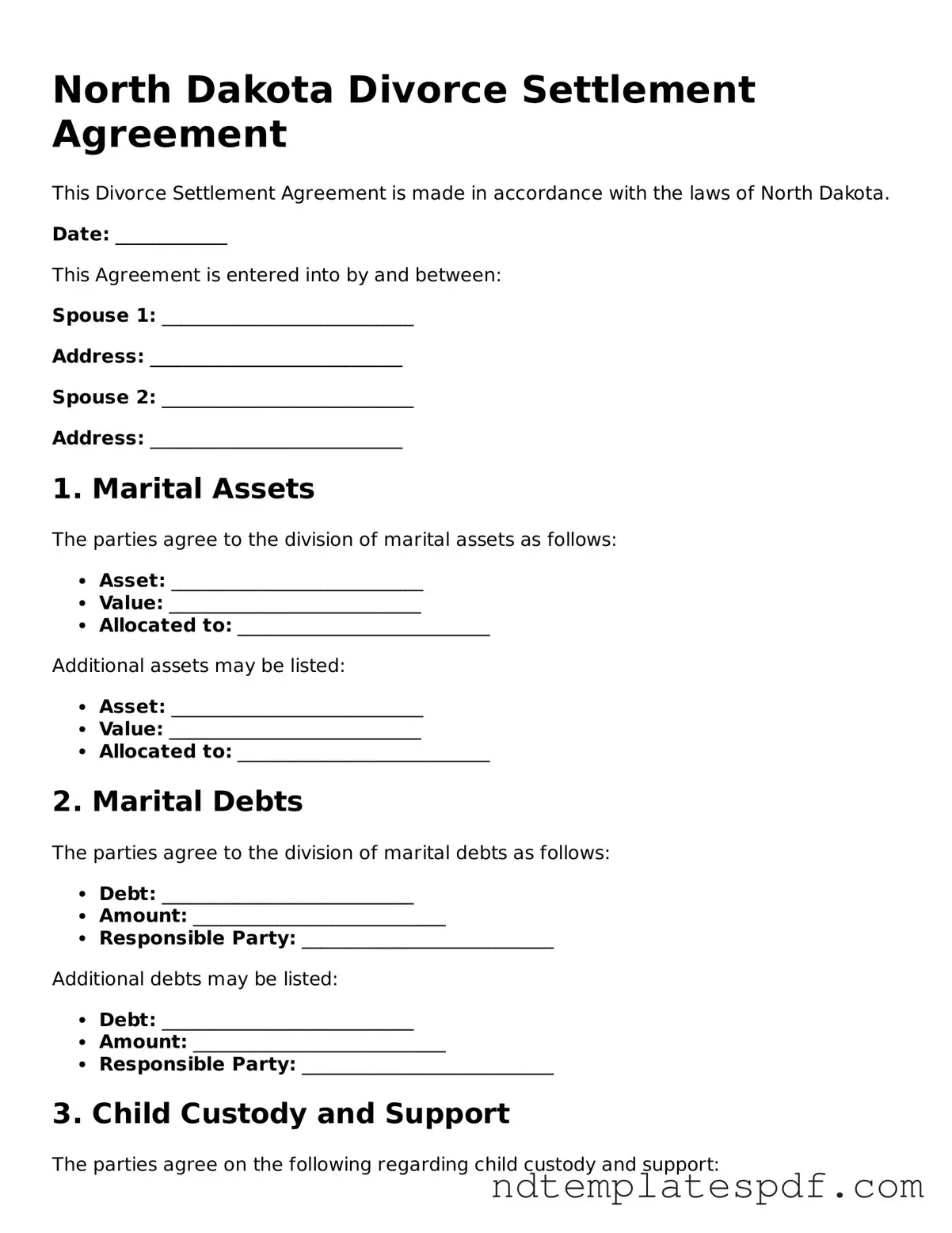Legal North Dakota Divorce Settlement Agreement Document
The North Dakota Divorce Settlement Agreement form is a crucial document that outlines the terms of a divorce between two parties. This form helps ensure that both individuals agree on key issues such as asset division, child custody, and support obligations. Understanding this form is essential for a smooth and fair divorce process.
Fill Out Document Now
